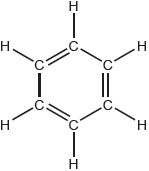| Date | November 2020 | Marks available | 1 | Reference code | 20N.3.hl.TZ0.11 |
| Level | HL | Paper | 3 | Time zone | TZ0 |
| Command term | State | Question number | 11 | Adapted from | N/A |
Question
Gasoline (petrol), biodiesel and ethanol are fuels.
[U.S. Department of Energy. https://afdc.energy.gov/]
Calculate the energy released, in , from the complete combustion of of ethanol.
State a class of organic compounds found in gasoline.
Outline the advantages and disadvantages of using biodiesel instead of gasoline as fuel for a car. Exclude any discussion of cost.
A mixture of gasoline and ethanol is often used as a fuel. Suggest an advantage of such a mixture over the use of pure gasoline. Exclude any discussion of cost.
When combusted, all three fuels can release carbon dioxide, a greenhouse gas, as well as particulates. Contrast how carbon dioxide and particulates interact with sunlight.
Methane is another greenhouse gas. Contrast the reasons why methane and carbon dioxide are considered significant greenhouse gases.
Suggest a wavenumber absorbed by methane gas.
Determine the relative rate of effusion of methane () to carbon dioxide (), under the same conditions of temperature and pressure. Use section 1 of the data booklet.
Markscheme
✔
alkane
OR
cycloalkane
OR
arene ✔
Accept “alkene”.
Do not accept just “hydrocarbon”, since given in stem.
Do not accept “benzene/aromatic” for “arene”.
Advantages: [2 max]
renewable ✔
uses up waste «such as used cooking oil» ✔
lower carbon footprint/carbon neutral ✔
higher flashpoint ✔
produces less /
OR
less polluting emissions ✔
has lubricating properties
OR
preserves/increases lifespan of engine ✔
increases the life of the catalytic converter ✔
eliminates dependence on foreign suppliers ✔
does not require pipelines/infrastructure «to produce» ✔
relatively less destruction of habitat compared to obtaining petrochemicals ✔
Accept “higher energy density” OR “biodegradable” for advantage.
Disadvantages: [2 max]
needs conversion/transesterification ✔
takes time to produce/grow plants ✔
takes up land
OR
deforestation ✔
fertilizers/pesticides/phosphates/nitrates «used in production of crops» have negative environmental effects ✔
biodiversity affected
OR
loss of habitats «due to energy crop plantations» ✔
cannot be used at low temperatures ✔
variable quality «in production» ✔
high viscosity/can clog/damage engines ✔
Accept “lower specific energy” as disadvantage.
Do not accept “lower octane number” as disadvantage”.
Any one:
uses up fossil fuels more slowly ✔
lower carbon footprint/CO2 emissions ✔
undergoes more complete combustion ✔
produces fewer particulates ✔
higher octane number/rating
OR
less knocking ✔
prevents fuel injection system build up
OR
helps keep engine clean ✔
Accept an example of a suitable advantage even if repeated from 11c.
carbon dioxide allows sunlight/short wavelength radiation to pass through AND particulates reflect/scatter/absorb sunlight ✔
Accept “particulates reflect/scatter/absorb sunlight AND carbon dioxide does not”.
Accept “ absorbs «radiation» AND particulates reflect/scatter/absorb sunlight”.
Do not accept “traps” for “absorbs”.
carbon dioxide is highly/more abundant «in the atmosphere» ✔
methane is more effective/potent «as a greenhouse gas»
OR
methane/better/more effective at absorbing «radiation»
OR
methane has greater greenhouse factor
OR
methane has greater global warming potential/GWP✔
Accept “carbon dioxide contributes more to global warming” for M1.
any value or range within ✔
«rate of effusion of ✔
Examiners report
Almost all were able to calculate the energy released from the complete combustion of ethanol.
The majority cited correctly that alkanes are a class of organic compounds found in gasoline.
Most gained at least one mark for an advantage of using biodiesel instead of gasoline as fuel for a car and most scored one mark at least for a disadvantage of biodiesel. Many conveyed solid understanding, though the disadvantages were not as well articulated as the advantages. Some incorrectly based their responses on cost factors which were excluded as outlined in the stem of the question.
Most scored the one mark for this question, with "less knocking or higher octane number/rating" the most common correct answer seen.
The wording of this question was critical which involved contrasting how carbon dioxide and particulates interact with sunlight. Some missed the "Contrast" command term as the action verb. Loose, non-scientific syntax was often seen such as stating "traps" instead of "absorbs".
This was another "Contrast-type" question, which was better answered compared to (e)(i). Many scored both marks by stating that carbon dioxide is more abundant in the atmosphere whereas methane is more effective at absorbing IR radiation.
The main issue with this question was that a high percentage of candidates did not realise that wavenumber is the reciprocal of wavelength and hence wavenumber has typical units of cm-1. Many incorrectly gave wavelength values, in nm, which did not answer the question posed.
The determination of the relative rate of effusion of methane to carbon dioxide was almost universally correctly computed as 1.656.




